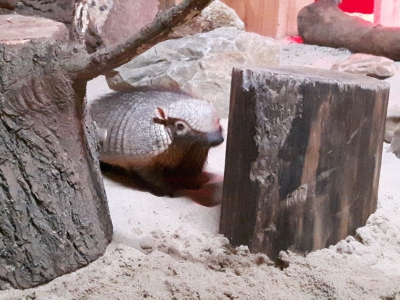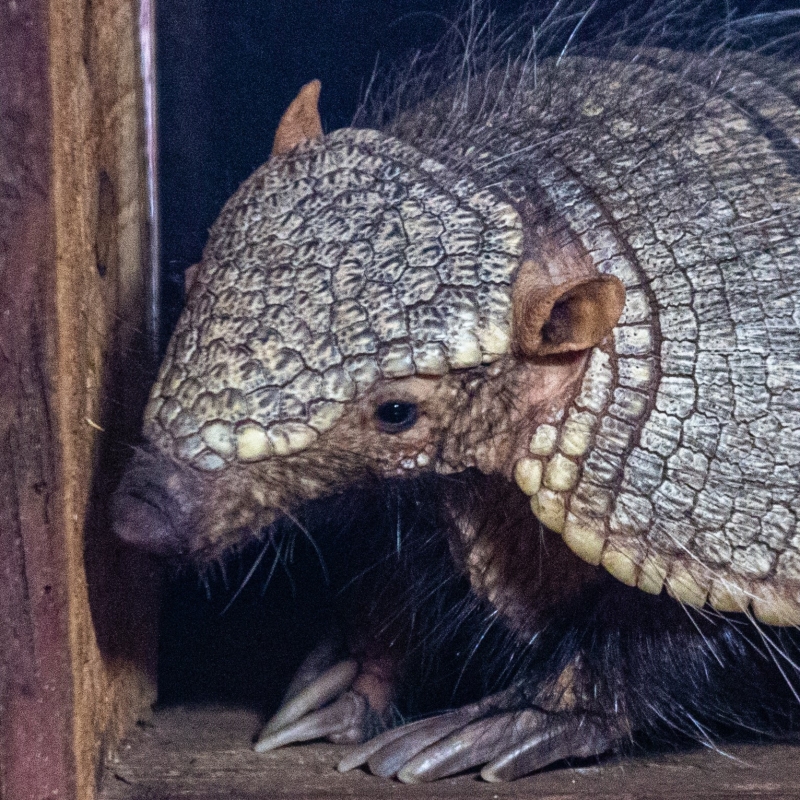Big hairy armadillo Chaetophractus villosus
Animals in our sanctuary
Arnold

Arnold and Edgard were brought at De Zonnegloed in October 2015 after a bankruptcy of a zoo in the Netherlands. When we saw their papers, we saw that these animals had been in four different places before they lived in the bankrupt animal park. Now they can enjoy their permanent home peacefully here in De Zonnegloed.
Where does he feel most at home?
The large hairy armadillo lives in desert-like areas in the southern part of South America.
What's his favourite food?
In the summer, the animal is mainly active at night and will hunt for food, from insect larvae to rodents. In winter, however, the animal is active during the day and feeds on plants.
Fun fact
The large hairy armadillos can store enough oxygen in its body to hold its breath for up to six minutes. An armadillo can therefore also cross rivers by holding its breath and simply walk across the bottom to the other side.
Adopt this Big hairy armadillo



